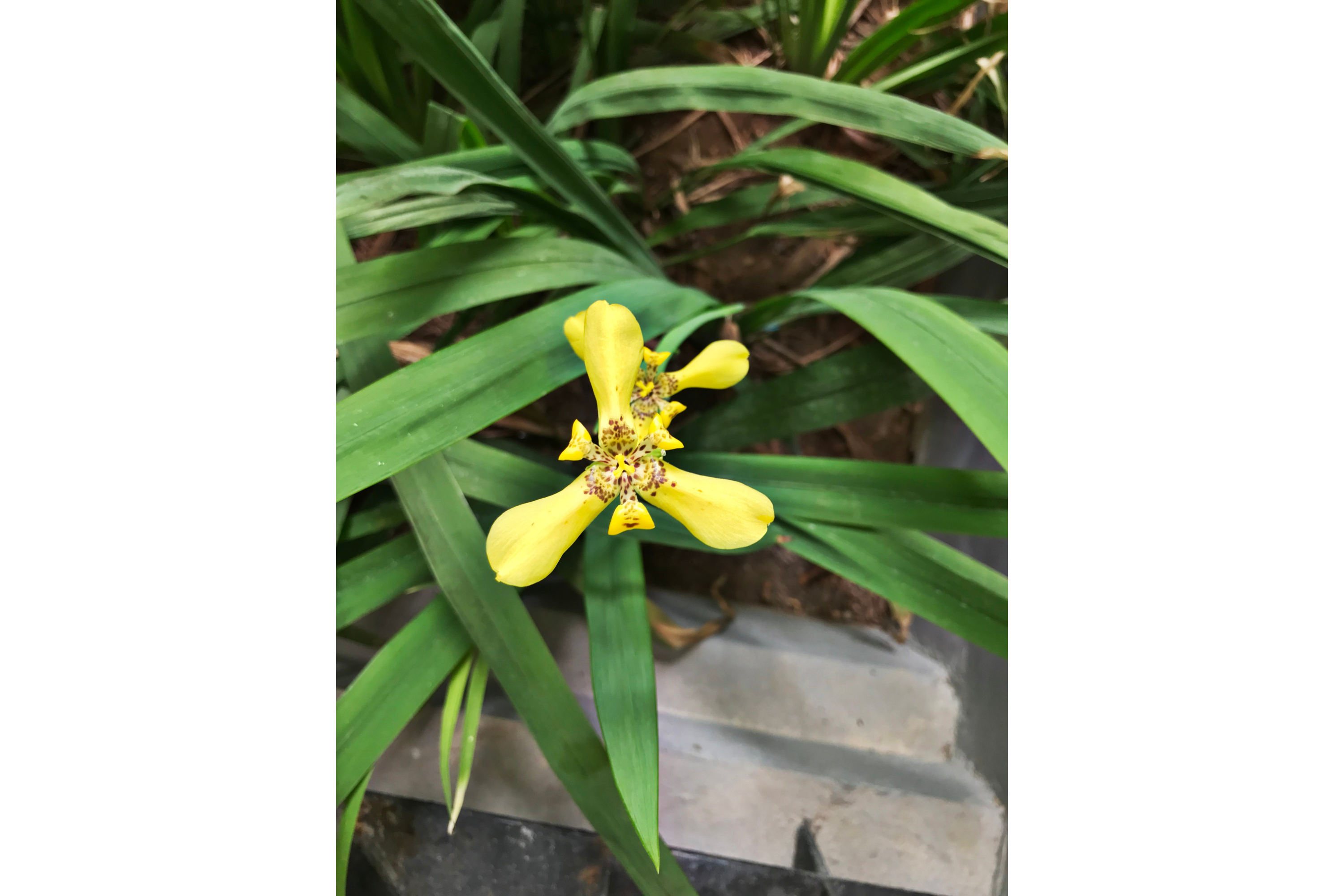Steyermark'S Trimezia
(Trimezia steyermarkii)

Description
Trimezia steyermarkii is a species of flowering plant in the family Iridaceae, native to southern Mexico, Central America, Colombia, and Venezuela. Plants are up to 150 cm tall, with rhizomes up to 2–4 cm long and 2–3 cm wide; leaves are lanceolate, 60–150 cm long by 2 cm wide; flowers are yellow with brown spots. In countries like Colombia and Venezuela one of common names that is often given to this plant is "Hand of God" because of the three flower petals. Trimezia steyermarkii is closely related to T. martinicensis, with which it has been widely confused. See that article for differences. Trimezia is a genus of flowering plants in the family Iridaceae, native to the warmer parts of southern Mexico, Central America, South America, Florida, and the West Indies. Trimezia is placed in the tribe Trimezieae. The division of the tribe into genera has varied considerably. In one approach, it contains only the genus Trimezia, which then includes the genera Neomarica, Pseudotrimezia and Pseudiris. In other approaches, two to five genera are recognized, sometimes also including the genus Deluciris. The English names walking iris, apostle's iris and apostle plant have been used for many species, regardless of the generic placement (e.g. for Trimezia gracilis, syn. Neomarica gracilis). New plantlets form at the end of the flower spikes; after flowering, the spikes fall over and a new plant grows, so the plant "walks". Names including "apostle" refer to the incorrect belief that plants do not flower until 12 or more leaves are present. The rootstock is variously described as an elongated corm or a rhizome. Plants vary in height from about 7 cm (2.8 in) in the case of T. pusilla to 1.6 m (5.2 ft) in the case of T. spathata subsp. sincorana. Linear to lanceolate leaves grow from the base of the plant. Most species have flowers in some shade of yellow. The six tepals are arranged in two series. The outer tepals (sepals) are larger than the inner ones (petals); both may have brown-purple markings at the base. The stamens have free filaments (i.e. they not fused together or fused to the style). The style is divided into three branches, each of which usually has two lobes. The genus Trimezia was first published with an appropriate description by William Herbert in 1844. Herbert attributed the name to Salisbury, whose use he described as "absque charactere" ('without character').
Taxonomic tree:







